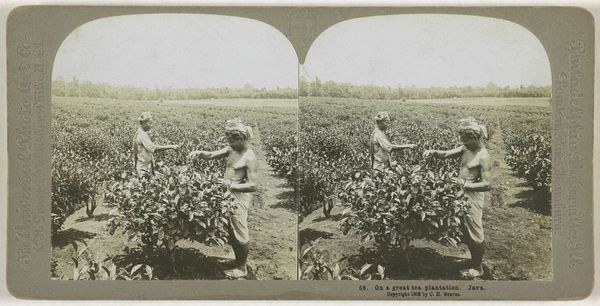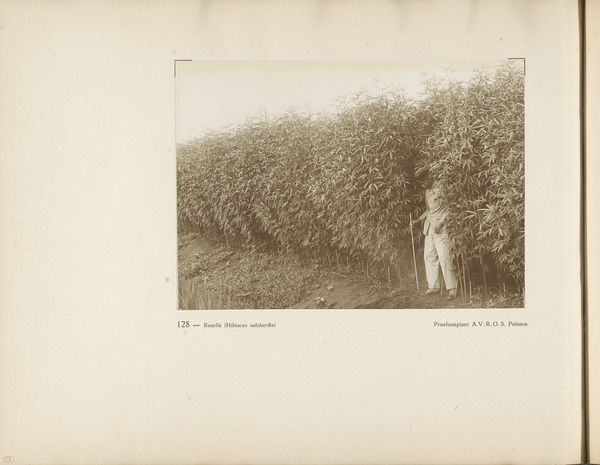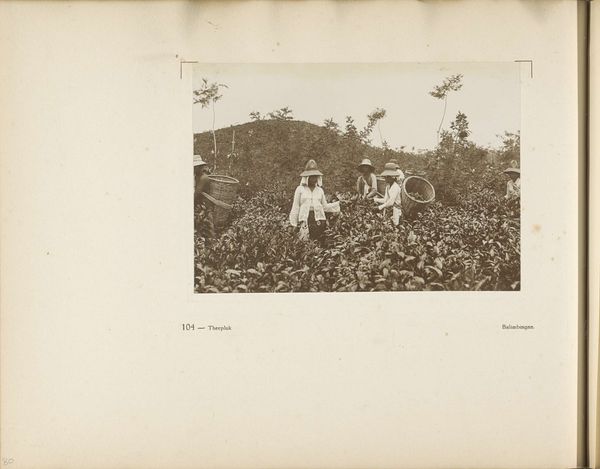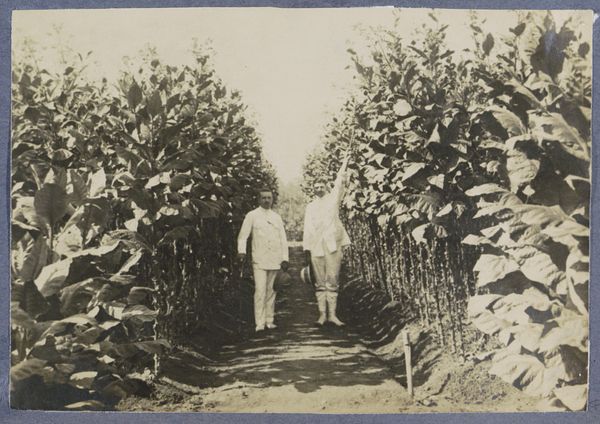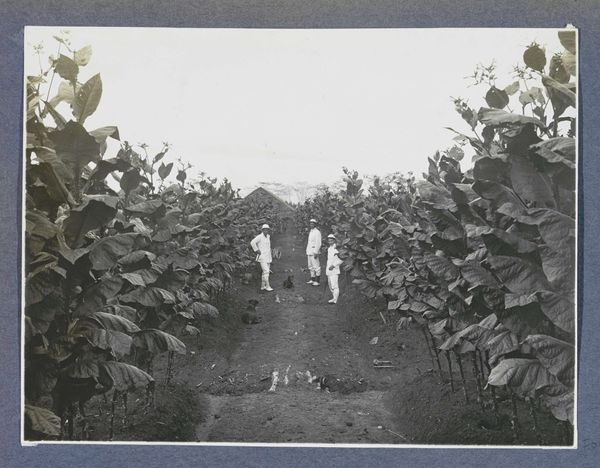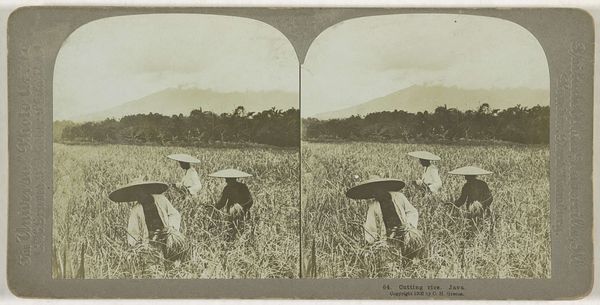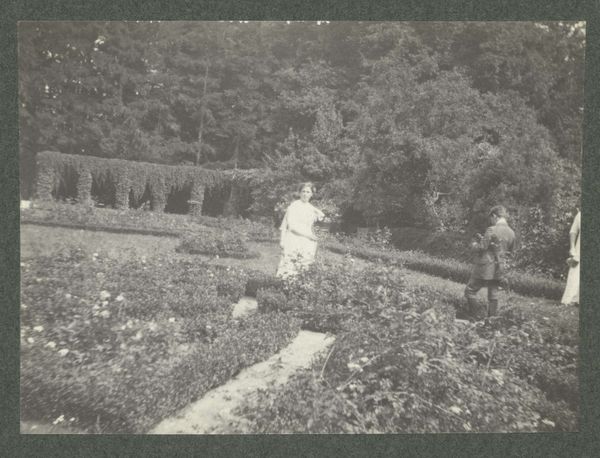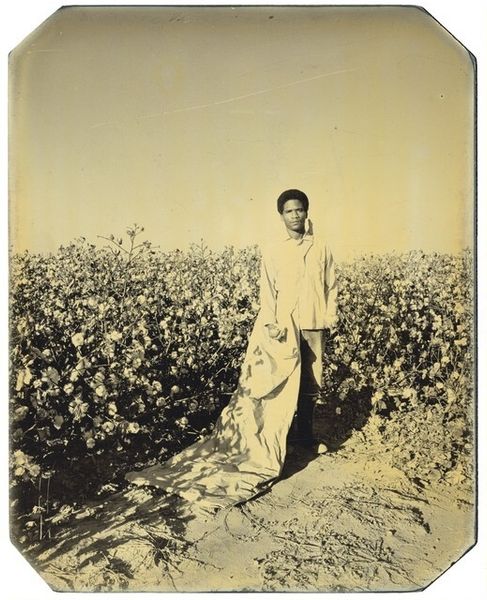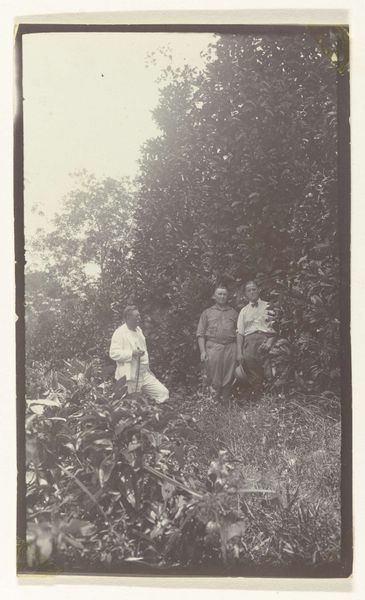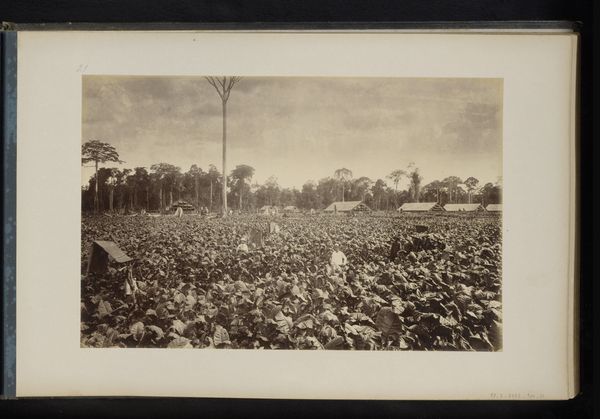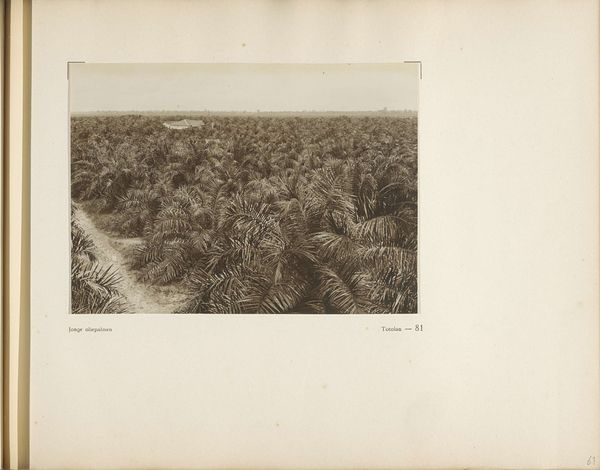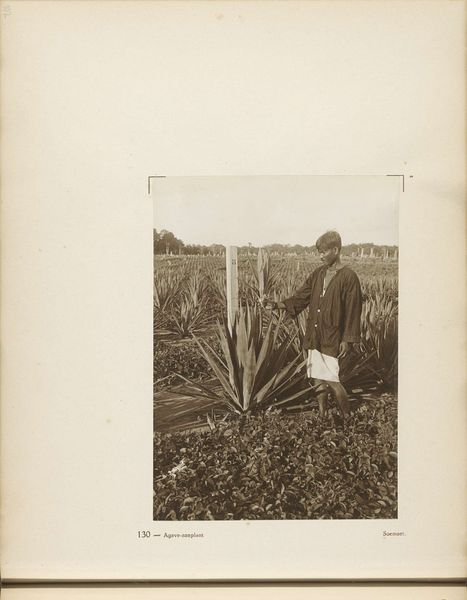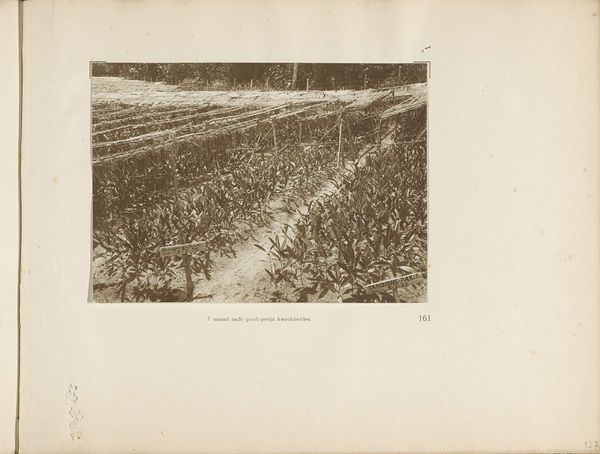
Pagina 106 van fotoboek van de Algemeene Vereeniging van Rubberplanters ter Oostkust van Sumatra (A.V.R.O.S.) c. 1924 - 1925
0:00
0:00
photography, gelatin-silver-print
#
portrait
#
landscape
#
photography
#
orientalism
#
gelatin-silver-print
Dimensions: height 240 mm, width 310 mm
Copyright: Rijks Museum: Open Domain
Curator: Here we have page 106 from a photo book by the General Association of Rubber Planters on the East Coast of Sumatra, or A.V.R.O.S., dating from around 1924 to 1925. The gelatin-silver print is currently held in the Rijksmuseum collection. Editor: My first thought? It's dreamy. The tones are muted, almost sepia-like, giving it a distant, romantic quality. Yet there's something also very real and solid in the form of the woman and the dense tea plantation. Curator: Indeed. The composition leads the eye from the woman, posed mid-action, diagonally across the terraced landscape. It employs what one might call an Orientalist trope, but presents a functional image: we see her at labor. Editor: I am struck by the woman’s attire, so graphic, which I see in contrast to the overwhelming field, creating a balance of hard vs soft in the whole arrangement. What strikes me is how much human energy is contained within these somewhat constrained pictorial parameters. Curator: The limited tonal range allows for close inspection of texture—look at the varying shades that define the leaves against her printed cloth, and note how it renders a tactile sensation, the sense of surface. I want to touch and analyze the weave. Editor: To me it is more how her energy seeps into the plants around her. Look at the angle of her hand, there is intention in it. I feel she is both connected to and detached from the crop she harvests, the embodiment of labor as art. Curator: Perhaps we can agree that through photographic chemistry, chemical and human agency interact; we’re viewing, ultimately, a captured process. This is not merely a pretty picture, it’s a document, yet like many photos, its semiotics and subtexts have changed over time. Editor: It is more than that for me: a story of land, labor, and legacy, all rendered in shades of enduring silver. I keep going back to the way the woman has been rendered, framed in place. Curator: A final thought: its documentary intention now yields different aesthetic results. This is no longer just an image of colonial labor; it is an exploration of balance and, arguably, even a form of resistance, now liberated.
Comments
No comments
Be the first to comment and join the conversation on the ultimate creative platform.
